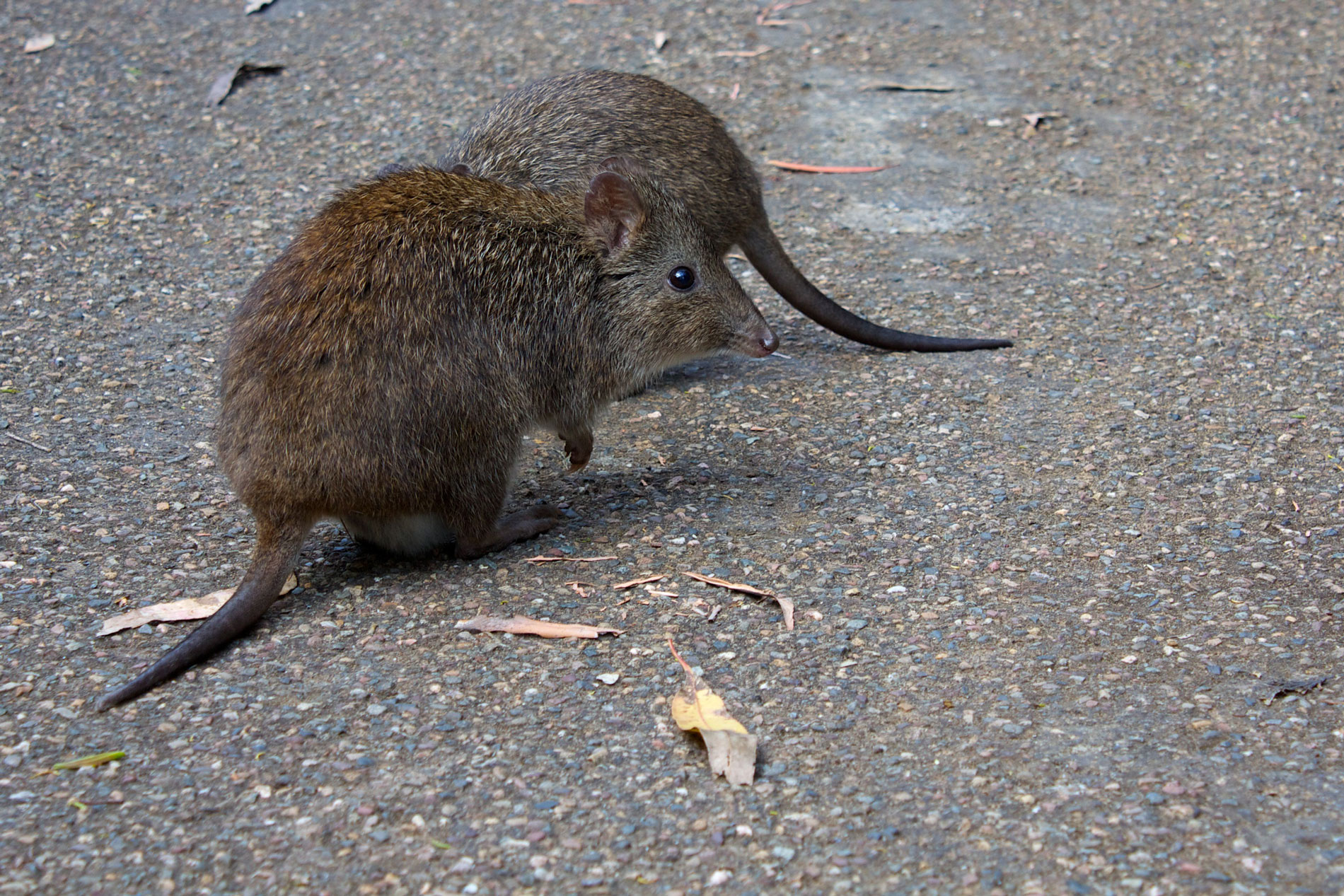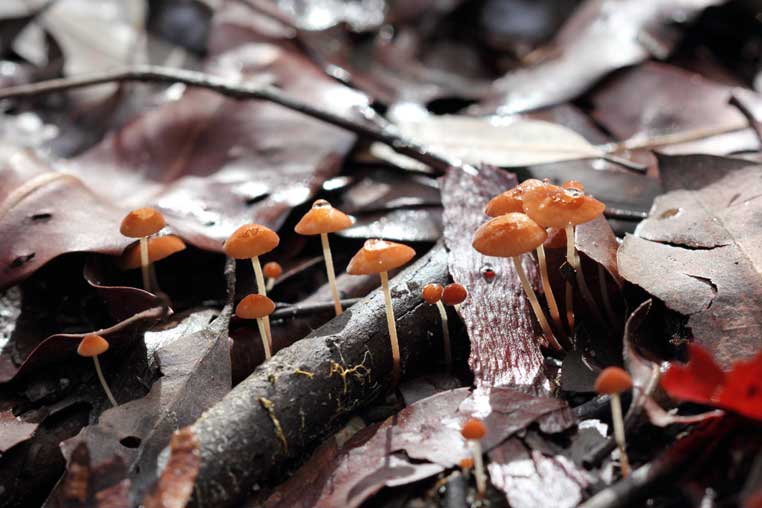Underground fruiting bodies of fungi are the favourite food of Long-nosed Potoroos.
During December 2014 to April 2015 the Lockyer Valley Regional Council supported a local community group to undertake professional surveys of small mammals in the Western Lockyer. During one survey, a Long-nosed Potoroo was accidentally flushed from the undergrowth. This incidental sighting is the first record of this species in the survey area. The Long-nosed Potoroo (Potorous tridactylus) is a threatened species, listed as Vulnerable under both Queensland and Commonwealth legislation, so this sighting was cause for some delight.
The Long-nosed Potoroo, with its long pointed nose and grey-brown fur, can initially be mistaken for a bandicoot, until of course it tucks up its short muscular fore-legs and hops away like a kangaroo. These strong forelegs are used for digging for its favourite food, fungi. As also mentioned in Nick Clancy’s article on pages 4-5, studies undertaken in Victoria have found that 70% of the Long-nosed Potoroo’s food was fungi, with over 60 different species of fungi eaten. This amazing, shy animal has an enlarged forestomach, which allows the fermentation of microbes and increases the nutrient uptake from fungi. When fungi availability is limited due to seasons, the Long-nosed Potoroo will forage for invertebrates and other plant materials such as roots, flowers and seeds.
Different fungi deliver a number of varying roles to the broader ecosystem. Many fungi specialise in decomposing organic materials. They are compost makers breaking down logs, leaves and other organic matter, utilising the carbohydrates for food and recycling nutrients for the use of other plants. These fungi ensure we are not knee deep in leaves and logs whilst walking through the forest.

Captive Long-nosed Potoroos photo above by sunphlo, Flickr CC BY-NC 2.0.
Mycorrhizal fungi have a symbiotic, or mutually beneficial arrangement, with plants. This fungi form a structure with the plants roots facilitating the sharing of resources.
A small number of fungi are parasitic, parasitising other plants, other fungi, or sometimes insect or beetle larvae. These fungi take nutrients from their host and do not generally cause much harm to their hosts.
“Studies undertaken in Victoria have found that 70% of the Long-nosed Potoroo’s food was fungi.”
Lichens on the other hand are specialised fungi, which again form a symbiotic association with an alga or cyanobacterium. The fungus shares water and the alga or cyanbacterium shares carbohydrates and sugars.

A diligent worker in the forest system, the Long-nosed Potoroo turns leaf litter over, mixes top soil and delivers fungi spores to disturbed ecosystems. Potoroos deliver a range of services such as aerating top soil, breaking down leaf litter, providing substrates for microorganisms, improving water and mineral cycles and supporting the re-establishment of mycorrhizal associations to the benefit of plants. All of these services result in healthy ecosystems and faster recovery from disturbance. All of this (and more) from one little animal looking for food. A sublime system indeed.
The strong interrelationship between the Long-nosed Potoroo, fungi and ecosystem health highlights once again the close relationships between plants, animals and the health of the natural system. As we all know this healthy natural system supports our very own existence on Earth.
The Long-nosed Potoroo requires a dense understorey often in natural systems that haven’t been burnt for 20 or more years. They are predated upon by cats and foxes and are seriously impacted by habitat loss and degradation, fires that are frequent and widespread as well as a lack of connectivity across the landscape. By keeping our pets indoors at night, managing re responsibly and fostering landscape connections through the Land for Wildlife program there is much that can be done in our daily lives. The link between us, the Long-nose Potoroo, fungi and ecosystem health is a cycle that never ends – even if those links and potoroos are not readily seen.
References & Further Reading
McMullan-Fisher S, Leonard P & Guard F (2014) Australian Subtropical Fungi. Suncoast Fungi.
www.wildlife.org.au/news/2013/longnosedpotoroo.html
www.arkive.org/long-nosed-potoroo/potorous-tridactylus/
www.sciencedirect.com/science/article/ pii/S0140196303000612
Article by Kaori van Baalen Land for Wildlife Officer Lockyer Valley Regional Council
